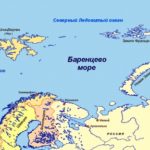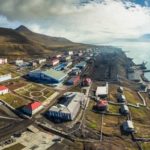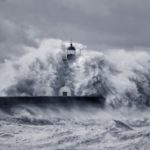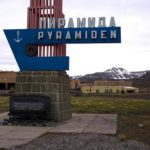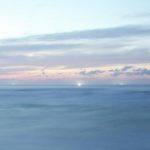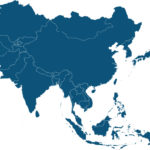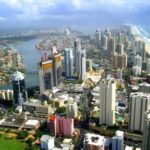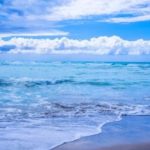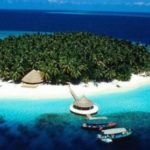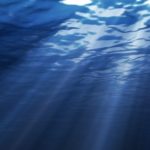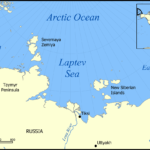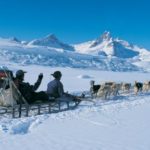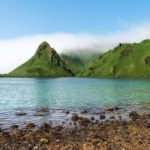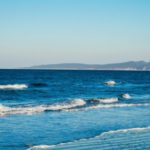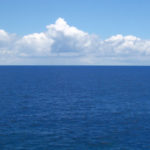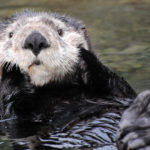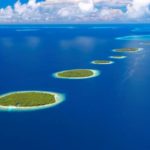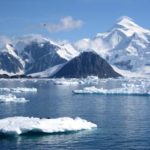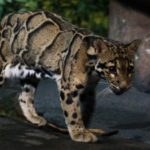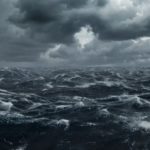Svalbard
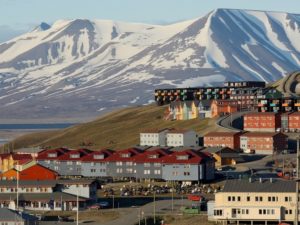 Svalbard is located between 76 ° 26 ′ and 80 ° 50 ′ north latitude and 10 ° and 32 ° east longitude at the junction of three seas: the Greenland Sea from the west, the Norwegian Sea from the south and the Barents Sea from the east. In the north, it goes out into the ocean.
Svalbard is located between 76 ° 26 ′ and 80 ° 50 ′ north latitude and 10 ° and 32 ° east longitude at the junction of three seas: the Greenland Sea from the west, the Norwegian Sea from the south and the Barents Sea from the east. In the north, it goes out into the ocean.
Svalbard is an archipelago consisting of more than a hundred islands with a total area of 61022 square meters. km
It is officially considered that Spitsbergen was discovered and painted on the maps in 1596 by the Dutchman Willem Barents, although he was present on the Russian maps of the time and called himself “Holy Russian Islands”.
Description, nature and climate
The Svalbard archipelago consists of many islands. The three largest: West Svalbard, Northeastern Land and Edge Island, seven smaller ones: White Island, Prince Charles Land, Barents Island, Wilhelm Island, Bear Island, Kongsøya, Svenskøya and about a hundred small ones.
For years, Svalbard was just uninhabited rocky land almost half covered by glaciers. Earlier, only polar bears and seals lived on the archipelago, and now people have joined them.
The coasts of the islands of the archipelago are mostly steep and carved by narrow fjords and straits that have their own names: Horsund, Is-fjord, Belsund, Kongs-fjord, Wood-fjord. The big peninsulas also have names: Land of Nordenskiöld, Land of New Friesland, Land of Dixon, Land of Catch, etc.
The climate of Svalbard due to the warm Gulf Stream passing close to it makes it quite moderate. Winter temperature is rarely lower – 25 C. Moreover, there is a small amount of precipitation on the archipelago, not high humidity and a large number of sunny days a year.
The nature of Svalbard, despite its arctic desert, is quite diverse and beautiful in its own way. Many peaked mountains, countless glaciers, glacial lakes and waterfalls. Most of the archipelago and the surrounding marine territory are protected areas included in reserves and natural parks.
Despite the northern location, the flora of the archipelago is quite diverse. More than 160 types of vegetation grow here. Of course, these are mainly tundra plants: dwarf birch trees, willows, and a lot of flowering plants, thanks to which a short summer covers rocky tundra with greenery. In spring, polar poppies bloom in many places, white and yellow.
The fauna of the archipelago is not very diverse. The most common is the polar bear, which not only lives here, but also breeds. Bears feel quite free here and often enter villages or tourist camps. These animals are treacherous and can attack humans.
Svalbard has a lot of reindeer. This short-footed Spitzbergen deer living only here. At one time, almost all of them were exterminated, but after the ban on hunting, the population increased to about 10,000 heads. Now you can get a license to shoot.
For a long time there were musk oxen, brought here from Greenland in 1929. They were perfectly accustomed, but a couple of decades ago, they could not survive due to frequent thaws and the appearance of a thick ice crust in the tundra in the snow, although very few remained. attempts are being made to preserve the population. Two of them, called Bear and Masha, often appear near Grumant.
A large number of polar foxes live here, which feels great in the cold Arctic climate. Often, arctic foxes enter villages to profit from anything edible. There are quite a large number of large marine animals: harp seals, seals, bearded seals, walruses, which make their rookeries.
Whales and belugas whales often enter the fjords from the open sea. In the waters of the surrounding seas abundance of fish, are halibut, cod, haddock. In addition, shrimp fishing is common here. There is a char in the rivers, so-called Spitzbergen salmon.
Quite rich world of birds. These are mainly seabirds: murre, dead ends, guillemots, loons, eiders, terns, which arrange bird markets on the rocks. All of them breed their young here, and fly to the south for the winter. Only a polar owl and a white partridge remain to winter. There are also little birdies here that come in the spring before anyone else.
History of development
The history of the development of Svalbard peculiar. Despite its remoteness and scarcity of natural conditions, Spitsbergen has long attracted the attention of Europeans. For the first time, Svalbard was mentioned in an Icelandic saga, approximately in 1194. However, this land was still considered a figment of imagination for a long time, and only in 1596 it was nevertheless mapped. Willem Barents, a famous Dutch traveler, was one of the first explorers of the North.
In 1596, Barents made an attempt to find a sea route from the Atlantic to the Pacific Ocean along the northern coast of Eurasia and saw an unknown land along the way. Approaching, we became clearly visible rocky shores and high peaked mountains. In the ship’s log, this land was marked as Spitsbergen, that is, “Sharp Mountains”. Although the Russian Pomors, who lived here from the middle of the XVI century. they called this land Grumant, and on the Russian maps of that time it was called “Holy Russian Islands”, later this archipelago got the name given by Barents – “Svalbard”.
For a long time Spitsbergen did not belong specifically to any state. It was believed that the archipelago located beyond the Arctic Circle has no practical value. During the 17th and 18th centuries, the islands of Svalbard served as a temporary refuge for whalers from different countries. In 1614, the Dutch substantiated the first settlement of Smerenburg, which became the base of whaling. So it was until in this part of the Arctic Ocean whales were almost completely destroyed.
After the American John Longyear discovered coal in 1906 and opened the first coal mine, Dutch, Norwegians, Americans, British, and Russian industrialists reached out to Spitsbergen and began to set up industrial coal mining. This raised a lot of controversial issues. In order to resolve conflicts, in 1907 Norway proposed to determine the status of Spitsbergen. In 1910 – 1912 at the conferences in Oslo, Russia and Norway worked on the draft international convention on Svalbard. However, World War I suspended this work.
Work resumed only in 1919. Then, at the Versailles Conference in Paris, at the conclusion of a peace treaty, the treaty on Svalbard was also considered, according to which Spitsbergen officially received the sovereignty of Norway, but in a limited manner. All signatory states received the right to conduct economic and scientific activities in the archipelago, along with Norway. The treaty was signed by 39 states. Russia was not invited to the conference, it joined the treaty only in 1935.
The study and development of Svalbard was largely done by Russian scientists led by V. Rusanov. In 1912, the expedition Rusanova explored a huge area and as a result coal deposits of 40 million tons were discovered, which were secured with application columns. The development was started by the joint-stock Anglo-Russian society “Grumant” which existed until 1931, until the USSR fully redeemed the company’s shares and the 80-square-km field. At the same time, the Arktikugol Trust was organized in the future, mastering Spitsbergen. Three mines were built: “Grumant”, “Barentsburg” and “Pyramid”.
Since the beginning of the Second World War, Fascist Germany also drew attention to Spitsbergen, they were attracted by the advantageous strategic location of the archipelago. In order to prevent the plans of the Reich in the fall of 1941, all mining operations were stopped, and the population was evacuated, the mines were blown up. Without electricity and heat, Spitsbergen could not become a military base for the Germans, and therefore they used these sites for the location of weather stations and the corrective actions of German aircraft. The Norwegian landing force landed on the island in 1942 and one after another shot the Germans on the island, but they could not completely destroy them. In 1943, the Germans sent several ships to destroy the Norwegian detachment. Shelling they destroyed Longyearbyen, Barentsburg and Grumant. One mine caught fire and the fire spread over coal seams, which could only be extinguished in 1960. The Germans almost completely destroyed the Norwegian detachment. The surviving Norwegians were evacuated by the British at the end of 1943, but the small Norwegian garrison remained in Svalbard until the end of the war. One German weather station operated until September 1945. The meteorologist of this station, Wilhelm Dege, was the last German soldier who surrendered on September 4, 1945.
After the war in 1948, coal mines began to be restored in Svalbard. In 1950, 88.8 thousand tons of coal was mined at Grumant. After re-exploration of deposits in 1981, coal reserves in Svalbard were estimated at more than 10 billion tons. About 300 thousand tons of coal is mined in Svalbard annually. Extraction are only Norwegians and Russians. Coal mining is now conducted at the most modern level with the use of mechanization and automation, and therefore the number of people working in coal mining has significantly decreased.
After the law on environmental activities in Svalbard was passed, coal mining is reduced. The Pyramid and Grumant mines have been abandoned, only Barentsburg remained operational. Oil and gas were discovered not far from these deposits, however, development is not carried out in order to preserve the ecology of the archipelago. At present, the Russian town of Svalbard is the village of Barentsburg, the capital of Russian Spitsbergen, the Grumant and Kolsbey mines, the village of Pyramid and Tundra Bogeman.
With the decrease in coal production, many of the inhabitants of the island remained idle. It would seem who would agree to live at the North Pole, where it is winter all year round. Here the sun shines for six months, and the second six months everything seems to be at dusk. Spring and summer are so short that you don’t have time to really understand what is happening. But still, people live here and the city is quite modern: a supermarket, post office, bank, library, there are kindergartens, hotels, cafes with small restaurants, as well as a hospital and the editorial board of the island newspaper. And the island’s economy is beginning to shift towards tourism.
Tourism in Svalbard
It is still not so cold here, thanks to the warm wind and the Gulf Stream, which runs slightly off the island. For a while there is not even snow. The land here is not simple, it is bound by permafrost. Not far from the city is the Sarcophagus mountain, you can climb it and then the guide, who must be hired in the hotel, will tell you that spring is still here, but not for long.
In particular, beautiful flowers, mainly poppies and stone-stones, grow on the slopes of the mountain. From the animal world can be found on the island of the scribe, reindeer and polar bears. Of the birds – only one partridge does not leave the island, all the others migrate to the south. As for tourists, they are always welcome here and they come … not for long. It’s cold after all!
The most attractive months for courageous travelers are June and August. Tourists are attracted by the untouched arctic nature. But even in summer, the islands are completely covered with a snow blanket. At the same time, the weather is very comfortable, and nature is blooming, trying to go all out in this short time. The snowy expanses begin to bloom with bright colors, birds are singing everywhere, sea animals arrange rookeries on the shore, and while walking around the islands you can encounter reindeer and polar bears. It is because of polar bears that it is forbidden to leave villages unarmed. However, the use of weapons can not be thoughtless, because the killing of a bear, even because of self-defense, may end in a trial and two-year imprisonment. Therefore, each tourist is obliged to warn the administration about where and why he went, so that you can organize a rescue expedition. Independent walks without a guide are prohibited.
Interesting Facts
A feature of the Svalbard archipelago is its very clean atmosphere. Here, dust, bacteria and microbes are practically absent in the air, as a result of which the biological activity of the environment is very low. As a result, any artificial and organic objects for a long time do not deteriorate and remain in their usual form. Vegetables, fruits, fish, meat, even without a refrigerator, do not deteriorate for a long time, and abandoned objects, things, objects and structures remain even after decades in the form they were left behind. That is why there is no cemetery in Svalbard, the dead are taken to the mainland.
Svalbard has an unusual biological rhythm and almost no green at all, so people in the middle zone, and even more so the south, adapt for a very long time, and some people cannot adapt at all and after a while are forced to leave.
At 3 kilometers from Longyir, the capital of Spitsbergen, is located the seed storage of all plants existing on earth. This was done in case of a global global catastrophe, in order to preserve the ability to reproduce the dead plants. The World Seed Vault or Doomsday Storehouse was equipped in 2006 in a rock at a depth of 120 meters. Artificial climatic installations and natural natural conditions of permafrost will allow to keep the seeds in a state of germination. The project cost $ 9 million. Each country received its own compartment. The storage capacity is 4.5 million species of seeds.
In Svalbard, seven national parks have been created to protect the flora and fauna, in which the animals live by themselves in their usual conditions. But quite often wild animals, feeling impunity, move freely around the island and even enter villages. Places where these uninvited guests may appear are marked with a special traffic sign, which no longer exists in any country.
Vehicles on the archipelago are a small number of cars, almost all crossovers and jeeps, but more are used snowmobiles, which can be seen here in every house or in the common parking lot. In the summer, many prefer boats.
Svalbard is the only visa-free zone in Europe. Heading here, you will have to take a visa only if you are flying with a transfer. In Longyearbyen there is a modern main airport on the archipelago. By the way, Svalbard Airport is the northernmost civil airport in the world.
Another feature that should not be surprised. All guides on the island are armed, and many residents too. This is allowed in case of encounters with polar bears, which sometimes show aggression. According to estimates, about 4,000 polar bears live on Svalbard, and no more than 3,000 inhabitants live there.
In Svalbard as well as on the continent, the police maintain order. True, there are only five policemen here, but they play the role of the police, border guards, and customs officers and have the widest powers. In short, this is a power that must be respected.
In different countries, the archipelago is called differently, so it is not surprising that it is Svalbard and Grumant and Svalbard, which can be heard from tourists, which is increasing every year here. We also advise you to devote one of your vacations to acquaintance in this amazing place in the Arctic.
